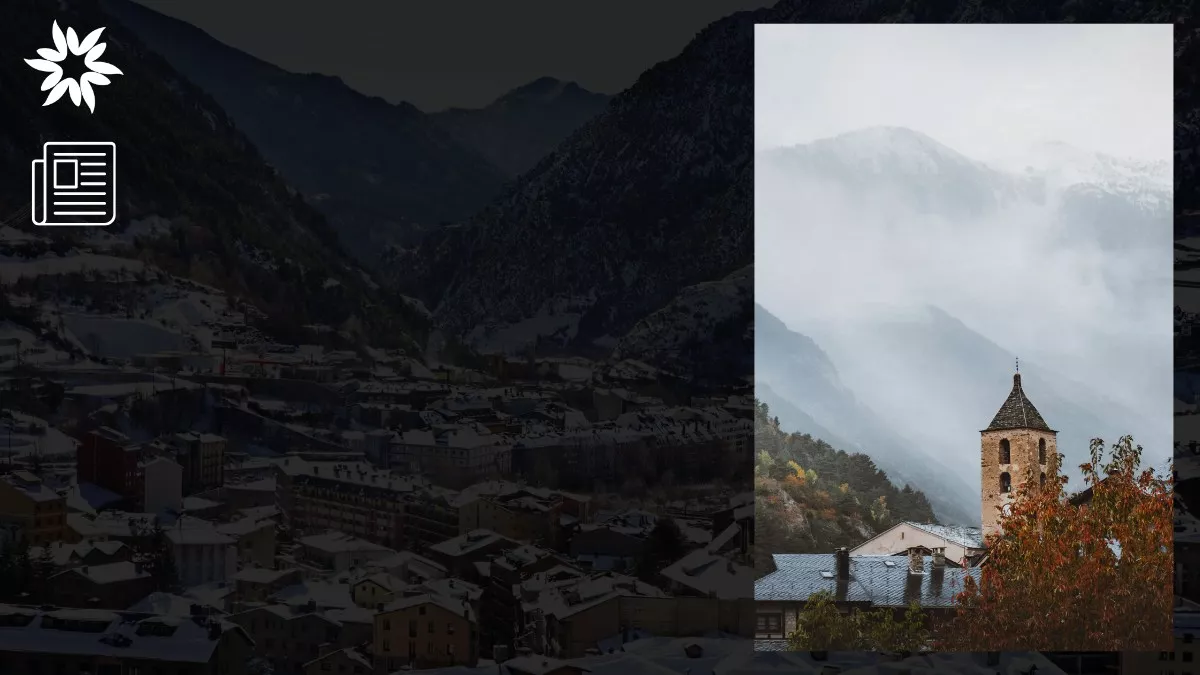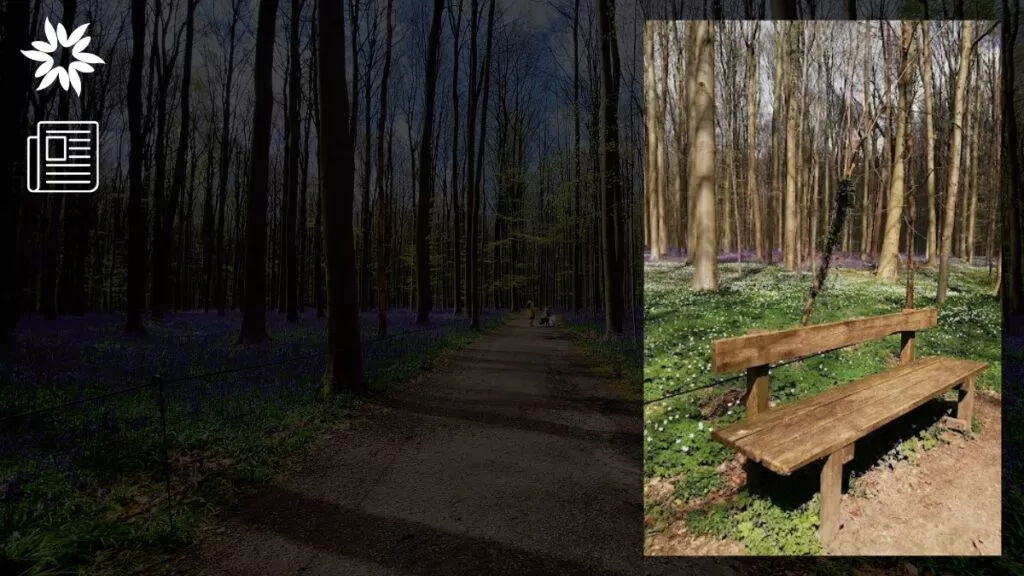When you travel for a holiday, you often think of taking it easy. You book a flight, check into a hotel, and enjoy the sights.
But what if the best places in the world aren’t easy to get to? What if the most amazing destinations are the ones that make you work for it?
You might have to take several flights, drive through crazy roads, or even camp in the middle of nowhere just to get there.
Some destinations have strict rules, require special permits, or don’t even have airports!
But you can guarantee it’s worth it; too many people are missing out on the trip of a lifetime purely based on the fact it sounds daunting. And it is, but so are some of the most rewarding things in life.
Today, we’ll take you through some of the hardest places in the world to visit.
And while many countries on this list aren’t for the faint of heart, for those who want a challenge and to stock up on stories to tell the grandkids, you’ll find exactly where to do so.
These places are calling your name—you just have to be bold enough to answer.
Key Takeaways
- Research everything in advance, from flights and visas to weather conditions and transportation. For example, if you’re heading to the Gobi Desert, know that roads are non-existent, and you’ll need a reliable 4x4 and a local guide to navigate.
- Many of these locations, like St. George Island or Antarctica, are at the mercy of unpredictable weather. Flights can be delayed or canceled, and plans might change without warning.
- Some destinations, like the Central African Republic or Turkmenistan, require guides or authorized tours due to safety concerns or strict rules.
1. Andorra
Andorra is a tiny country high in the Pyrenees Mountains, squished between Spain and France.
There is no airport, so if you want to visit, you’ll need to fly to either Toulouse-Blagnac in France or Barcelona-El Prat in Spain and then drive for a few hours through winding mountain roads.
It’s a bit of a hassle, but the views along the way are stunning.
When you finally get there, you’ll find a paradise for skiers and hikers.
Grandvalira, one of the largest ski resorts in Europe, is perfect for winter fun, and in the summer, the mountains are great for hiking.
Remember duty-free shopping—you can load up on perfumes, alcohol, and chocolate without feeling guilty about the prices.
2. Liechtenstein
You could say that Liechtenstein is like stepping into a storybook.
It’s a tiny country between Switzerland and Austria, with no airport of its own.
To get there, you’ll need to fly into Zurich, Switzerland, then hop on a train to a town called Sargans.
From there, it’s just a short bus ride to the capital, Vaduz.
Once you’re in Liechtenstein, the place feels magical.
Think castles perched on hills, like Vaduz Castle, where the royal family lives.
Of course, you can’t go inside, but the views are worth the trek.
And if you love hiking, you’ll have a field day since this little country has miles of trails, and the Fürstensteig hike offers some heart-pounding ridgeline views.
3. Monaco
Monaco is famous for luxury—yachts, fast cars, fancy hotels, and the Formula 1 Grand Prix.
But getting there isn’t as posh as you might think.
Since Monaco doesn’t have its own airport, you’ll need to fly into Nice Côte d’Azur Airport in France and then drive or take a train into Monaco.
But if you have the budget and feel like treating yourself, you can even take a helicopter ride from Nice to Monaco.
Once you arrive, the fun begins.
Try your luck at the Monte Carlo Casino or walk along the harbor, where mega-yachts line the docks.
But perhaps you’re not coming here for the luxury lifestyle; if so, there’s plenty to do, from exploring Monaco-Ville and the Prince’s Palace to enjoying Jardin Exotique, Larvotto Beach, or the iconic Circuit de Monaco.
4. Nepal
Home to Mount Everest and countless Buddhist temples, Nepal is a dream destination for anyone who loves mountains, adventure, or spirituality.
But flying into Kathmandu’s Tribhuvan International Airport can be nerve-wracking.
Pilots have to deal with a short runway and tricky conditions, as the airport is surrounded by Himalayan peaks.
But once you’ve arrived, the challenges fade away as you realize Nepal is a dream.
Hikers love the Annapurna Circuit and Everest Base Camp trails, where every step gives you views you’ll never forget.
And for a spiritual experience, visit the massive Boudhanath Stupa or the ancient temples of Patan.
Planning to head to Lukla to get closer to Mount Everest?
Then you will, of course, need to brace yourself––maybe literally.
Lukla Airport is often called the world’s most dangerous airport, with its tiny runway ending at a cliff.
5. Bhutan
Visiting Bhutan is like entering a whole different world, one that’s peaceful, clean, and so, so beautiful.
But it doesn’t come cheap or easy––Bhutan’s government strictly limits tourism to protect its culture and environment.
To even get in, you’ll need to book a package tour through an authorized operator, and you’ll have to pay a $250 daily fee.
It might sound steep, but this covers your guide, meals, accommodations, and transport.
Think of it as an all-inclusive adventure with a purpose: preserving Bhutan’s stunning beauty.
But when you arrive, you understand why it’s one of the most captivating remote places there is.
And the highlight has to be Taktsang Palphug, better known as the Tiger’s Nest Monastery.
Perched on the side of a cliff 3,000 feet above the Paro Valley, it’s breathtaking in every sense.
The hike to get there is no joke—you’ll huff and puff your way up, but the views are worth every step.
Beyond the monastery, Bhutan is full of surprises.
The capital, Thimphu, is charmingly modern while still holding onto its traditions.
No traffic lights here—just policemen directing cars at busy intersections.
And if you time your visit right, you might catch a colorful festival, complete with dancing monks and vibrant costumes.
Bhutan also measures success differently than anywhere else in the world.
Instead of GDP, they prioritize Gross National Happiness.
Yep, happiness is a government goal here, and it shows.
6. North Korea
North Korea is the ultimate mystery.
It might just be the world’s biggest talked-about secret, tightly wrapped up in government control.
Visiting isn’t impossible, but it’s definitely not your typical vacation.
First, you’ll need to book through an official travel agency approved by the North Korean government.
Then, you’ll join a guided tour that sticks to a strict itinerary.
But you can forget wandering off on your own—your guides will be with you every step of the way, watching, explaining, and sometimes subtly steering you.
Despite the restrictions, North Korea is fascinating and a very beautiful country.
The capital, Pyongyang, feels like a time capsule.
Huge, spotless streets with almost no cars, towering statues of leaders, and massive public squares make the city look like something out of a dystopian movie.
One must-see is the Mansu Hill Grand Monument, where gigantic bronze statues of Kim Il-sung and Kim Jong-il stand tall.
You’ll be expected to bow, so be prepared for that.
Other highlights include the Pyongyang Metro, one of the world’s deepest subway systems, and the Victorious Fatherland Liberation War Museum, which offers North Korea’s take on history.
For a change of scenery, head to Mount Myohyang.
This picturesque area is home to the International Friendship Exhibition, a bizarre museum showcasing gifts given to North Korean leaders from around the world.
While a visit to North Korea is eye-opening and surreal, be sure to follow the rules—getting on the wrong side of the authorities is not an option here.
7. Eritrea
Eritrea doesn’t make it easy for visitors.
You’ll need a visa, and even once you have one, your movements are restricted.
But if you manage to get in, you’re in for a treat.
This small country in the Horn of Africa is packed with history, stunning landscapes, and an intriguing mix of cultures.
Asmara, the capital, is known as “New Rome,” and the city is full of art deco buildings and wide boulevards built during Italian colonization.
Imagine sipping a perfect cappuccino at a café surrounded by pastel-colored buildings—it’s like Italy, but with an African twist.
Outside the city, the adventures continue.
The archaeological site of Qohaito is a must-see.
It’s believed to date back to 750 BC, and wandering among its ancient ruins feels like walking through history.
Then, there’s the Filfil Forest, a rare green oasis in a mostly arid region.
It’s one of the last remnants of East Africa’s Green Belt, and it’s teeming with birds and other wildlife.
Eritrea’s Red Sea coastline is another hidden treasure.
The Dahlak Archipelago offers pristine beaches, crystal-clear waters, and some of the best diving spots in the world, with colorful coral reefs, shipwrecks, and schools of tropical fish.
It’s remote, yes, but that’s part of the charm.
8. Democratic Republic of Congo (DRC)
The Democratic Republic of Congo (DRC) is a land of contrasts.
It’s one of the most resource-rich countries in the world, yet political instability and conflict have made it one of the hardest to visit.
So, you can imagine getting a visa here isn’t easy, and safety concerns mean you’ll need to plan carefully.
But if you’re up for the challenge, the DRC offers an adventure like no other.
The country’s natural beauty is jaw-dropping, and you can explore its dense rainforests, thundering waterfalls, and sprawling savannahs.
The Virunga National Park, a UNESCO World Heritage Site, is home to endangered mountain gorillas and active volcanoes.
Trekking through the jungle to see gorillas in their natural habitat is a once-in-a-lifetime experience.
Then there’s the Congo River, one of the world’s mightiest waterways.
A boat trip here takes you past remote villages, lush landscapes, and wildlife you won’t see anywhere else.
With over 200 ethnic groups, Congo is a melting pot of traditions, music, and art, so expect a culture shock, but in the best way.
In Kinshasa, the capital, you’ll find markets, live music, and street art that tell the story of the city.
Of course, visiting the DRC comes with challenges.
You’ll need a good guide, careful planning, and a healthy dose of flexibility.
But the rewards are absolutely worth it.
9. Turkmenistan
Turkmenistan is one of those places that feels like a well-kept secret.
Getting in is no joke—you’ll need an invitation letter, a pre-approved itinerary, and to stick to a guided tour for your whole trip.
It’s not exactly a destination for spontaneous travelers, but trust me, the quirks of this place make it an adventure like no other.
The capital, Ashgabat, is covered in white marble—literally, to the point it resembles an alternate reality of some sort.
It, in fact, holds the Guinness World Record for having the highest concentration of white marble buildings.
Everything gleams under the sun, from the massive government buildings to the eerily empty streets.
Thus, when you’re walking around, you’ll feel like you’re in a futuristic ghost town.
And I can’t forget the Door to Hell, a massive, flaming gas crater in the middle of the Karakum Desert. And this fiery pit has, incredibly, been burning for over 50 years.
You can camp nearby and watch the flames dance against the night sky.
Not to mention, history buffs will love Merv, a UNESCO World Heritage Site that was once a key hub along the Silk Road.
Its ancient ruins are a reminder of Turkmenistan’s storied past, even though much of it is now crumbling.
The mix of surreal modernity and deep history makes Turkmenistan one of the world’s most unique destinations.
10. Syria
Syria’s beauty and tragedy are intertwined.
It’s one of the hardest places to visit today due to ongoing conflicts and safety concerns, but it’s also one of the most historically rich places on Earth.
If you’re determined to go, you’ll need a visa, and even then, travel is risky.
But those who make it describe the experience as haunting, heartbreaking, and deeply moving.
Damascus, one of the world’s oldest continuously inhabited cities, is like stepping back in time, to say the least.
The narrow alleys of the old city are lined with ancient mosques, bustling markets, and centuries-old architecture.
The Umayyad Mosque, with its intricate mosaics, is a must-see and an important spiritual site for Muslims and Christians alike.
In Aleppo, another city with a long and storied past, the scars of war are evident.
The once-thriving Aleppo Citadel, a fortress that dates back to medieval times, now stands partially in ruins.
And for anyone who’s coming here for its history, you’ll want to check out the Roman ruins of Palmyra.
This ancient city, located in the desert, was once a vital trade hub.
While much of it has been damaged or destroyed, standing among its remnants is still a powerful experience.
As you can expect, traveling to Syria isn’t easy for the faint-hearted, but for those who make the journey, it’s an unforgettable look at the strength of a place and its people.
11. Aldabra, Seychelles
If you’re dreaming of untouched beaches, crystal-clear waters, and wildlife you won’t find anywhere else, Aldabra in the Seychelles is calling your name.
But getting there isn’t exactly simple.
This remote atoll in the Indian Ocean doesn’t have regular transport connections, so you’ll need to arrange a private boat or charter flight to make it happen.
Aldabra is famous for its massive population of giant tortoises—there are more tortoises here than people!
Watching these gentle giants roam freely in their natural habitat is like stepping into a nature documentary.
Underwater, Aldabra is just as magical since the coral reefs are teeming with vibrant marine life, from colorful fish to manta rays and even sharks.
So, it’s a diver’s dream, but the isolation means you’ll need to bring all your gear and plan carefully.
The atoll is also a UNESCO World Heritage Site, and its isolation has helped keep it pristine.
Exploring Aldabra feels like discovering a secret corner of the world, untouched by time or tourism.
It’s hard to get to, but once you’re there, you’ll wonder why anyone would want to leave.
12. Easter Island, Chile
Easter Island, or Rapa Nui, is one of the most remote inhabited places on Earth.
It’s located over 2,000 miles from mainland Chile, so getting there involves a long flight to Santiago, followed by another five-hour flight across the Pacific.
But when you land, you’ll see why this mysterious island has captured the world’s imagination.
The island’s famous moai statues are its main attraction.
These giant stone heads, carved by the Rapa Nui people, are scattered across the island, some standing proudly and others half-buried in the ground.
Seeing them in person is a humbling experience, especially when you consider the skill and effort it took to create and move them centuries ago.
Beyond the statues, Easter Island has a rugged beauty that’s impossible to ignore.
Volcanoes, grassy plains, and stunning beaches make it a must to explore.
Out of all the beaches, a non-negotiable should be Anakena Beach, with its soft white sand and turquoise water; it’s arguably the most beautiful spot in the area.
Also, don’t miss the opportunity to learn about the island’s unique Polynesian culture.
The locals are incredibly friendly and often share stories about their ancestors and traditions.
Visiting during a cultural festival, such as the Tapati Rapa Nui, gives you an even deeper connection to this magical place.
13. Antarctica
Antarctica feels like traveling to another planet, and that could be an understatement.
First off, there’s no airport where commercial flights can land, so you’ll need to get creative.
Most trips to Antarctica start with a flight to southern Chile or Argentina, followed by a boat ride across the notoriously rough Drake Passage.
And if you’re aiming for the Independence Mountains, things get even tougher.
You’ll likely need chartered flights to a frozen runway and then gear up for a trek across icy, unforgiving terrain.
Now, you’re probably thinking: Why is it worth all this trouble?
Well, Antarctica is unlike anywhere else on Earth.
Picture endless fields of white snow and ice, towering glaciers, and crystal-clear blue skies.
Plus, wildlife here is spectacular and surprisingly abundant.
You’ll see colonies of penguins waddling along the ice, seals lounging by the water, and maybe even a humpback whale breaching nearby.
The Independence Mountains, in particular, are a haven for adventurers.
Trekking through the icy wilderness feels like you’re exploring uncharted territory; camping out in the tundra under the shimmering southern lights is a once-in-a-lifetime experience.
It’s not an easy journey, but the isolation and beauty of Antarctica make it unforgettable.
14. Gobi Desert, Mongolia
The Gobi Desert is harsh, dry, and completely unforgiving.
Stretching across southern Mongolia and northern China, it’s one of the largest deserts in the world.
And there’s no easy way to get here.
First, you’ll need to fly into Ulaanbaatar, Mongolia’s capital, and then brave a long, bumpy ride across rough terrain to reach the heart of the Gobi.
You can forget about the roads. Most travel involves off-roading in a 4×4, and getting stuck in the sand is just part of the adventure.
But what makes it worth the effort?
For starters, the Gobi Desert’s landscapes are otherworldly.
Vast sand dunes, rocky canyons, and endless open skies create a sense of awe and tranquility.
It’s also rich in history—it was once part of the Silk Road, and it’s a treasure trove for paleontologists, with dinosaur fossils regularly discovered here.
Staying in a traditional Mongolian yurt (called a ger) is an experience in itself.
These round, portable tents have been used by nomads for centuries.
You’ll sleep under the stars, dine on hearty meals like mutton stew, and maybe even ride a camel across the dunes.
It’s a chance to disconnect from modern life and immerse yourself in the simplicity and beauty of the nomadic lifestyle.
15. Central African Republic
The Central African Republic (CAR) is one of the least-visited countries in the world, and it’s not hard to see why.
Years of political instability, armed conflict, and safety concerns have made it a no-go zone for most travelers.
But for those who do visit, it’s a land of stunning natural beauty and rich biodiversity.
Like every place on this list, getting to the CAR isn’t straightforward.
Most flights land at Bangui M’Poko International Airport, the capital’s small and often chaotic hub.
From there, travel within the country is challenging due to poor infrastructure and ongoing security issues.
You’ll need a reliable guide and a well-thought-out plan.
You may not understand why people brave this trip, but the answer is simple: The CAR is home to some of Africa’s most pristine wilderness.
National parks like Dzanga-Sangha offer the chance to see rare wildlife, such as forest elephants, lowland gorillas, and bongos (a type of antelope).
And the country’s rainforests are teeming with life; you can explore them by foot, canoe, or even by climbing to hidden treetop platforms.
The local culture is just as fascinating.
Despite the challenges, the CAR is home to communities with rich traditions in music, dance, and storytelling.
While visiting the CAR isn’t easy, for adventurous travelers looking for untouched beauty, it’s a hidden gem.
P.S. You should bear in mind that Africa is home to some of the most dangerous places in the world. So, if you plan to explore more of the continent, you must do your research beforehand.
16. St. George Island, Alaska
St. George Island is as remote as it gets.
It is part of the Pribilof Islands in the Bering Sea and sits about 300 miles off the coast of Alaska.
There is no direct route to the island—most visitors have to take multiple flights and then catch a small propeller plane.
And even then, weather conditions are unpredictable.
Strong winds, thick fog, and rough seas can delay or cancel your plans in a heartbeat.
Why bother?
Because St. George Island is a nature lover’s paradise.
It’s often called the “Galapagos of the North” for its incredible wildlife.
The island is home to hundreds of thousands of fur seals, seabirds, and even puffins.
The rugged cliffs are perfect for birdwatching, and during the right season, you might even spot whales migrating through the Bering Sea.
The landscape itself is wild and beautiful.
Rolling green hills, dramatic cliffs, and a constant misty atmosphere make it feel like a world like no other.
It’s a place to truly disconnect, breathe in the fresh sea air, and marvel at the raw power of nature.
Answer the Call of the World’s Hardest Places
So, you’ve made it this far, and now you’re probably wondering: should I take on the challenge of visiting these incredible, hard-to-reach places?
Let me tell you—it’s not just a “yes”; it’s a heck yes!
Think about it: How many people can say they’ve stood on the icy plains of Antarctica, surrounded by nothing but penguins and towering glaciers?
Or trekked through the vast, silent dunes of the Gobi Desert, sleeping under the clearest night sky you’ll ever see?
The secret to enjoying these trips is to embrace the unpredictability. Be ready for plans to change, flights to be delayed, or roads to disappear into sand dunes.
Go in with a sense of curiosity and openness, and you’ll find that even the detours turn into amazing stories.
Who knows, that bumpy 4×4 ride through the Central African Republic might lead to a hidden village or a breathtaking rainforest view.
So start researching flights, applying for a visa, or, at the very least, picking the destination on your bucket list.
The road might not be easy, but trust me, the memories will be worth every single step.
Bonus: It’s crazy how expensive traveling can be nowadays, so here’s how to manage rising travel costs in 2025.








